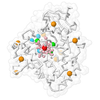Entry Database : PDB / ID : 1mmvTitle Rat neuronal NOS heme domain with NG-propyl-L-arginine bound nitric-oxide synthase, brain Keywords / / / Function / homology Function Domain/homology Component
/ / / / / / / / / / / / / / / / / / / / / / / / / / / / / / / / / / / / / / / / / / / / / / / / / / / / / / / / / / / / / / / / / / / / / / / / / / / / / / / / / / / / / / / / / / / / / / / / / / / / / / / / / / / / / / / / / / / / / / / / / / / / / / / / / / / / / / / / / / / / / / / / / / / / / / / / / / / / / Biological species Rattus norvegicus (Norway rat)Method / / / Resolution : 2 Å Authors Bretscher, L.E. / Li, H. / Poulos, T.L. / Griffith, O.W. #1: Journal : J.Biol.Chem. / Year : 1998Title : N5-(1-Imino-3-butenyl)-L-ornithine. A neuronal isoform selective mechanism-based inactivator of nitric oxide synthase
Authors :
Babu, B.R. / Griffith, O.W. History Deposition Sep 4, 2002 Deposition site / Processing site Revision 1.0 Sep 16, 2003 Provider / Type Revision 1.1 Apr 28, 2008 Group Revision 1.2 Jul 13, 2011 Group Revision 1.3 Dec 25, 2024 Group Advisory / Data collection ... Advisory / Data collection / Database references / Derived calculations / Structure summary Category chem_comp_atom / chem_comp_bond ... chem_comp_atom / chem_comp_bond / database_2 / pdbx_entry_details / pdbx_struct_conn_angle / pdbx_validate_close_contact / struct_conn / struct_conn_type / struct_site Item _database_2.pdbx_DOI / _database_2.pdbx_database_accession ... _database_2.pdbx_DOI / _database_2.pdbx_database_accession / _pdbx_struct_conn_angle.ptnr1_auth_asym_id / _pdbx_struct_conn_angle.ptnr1_auth_seq_id / _pdbx_struct_conn_angle.ptnr1_label_asym_id / _pdbx_struct_conn_angle.ptnr1_label_seq_id / _pdbx_struct_conn_angle.ptnr3_auth_asym_id / _pdbx_struct_conn_angle.ptnr3_auth_seq_id / _pdbx_struct_conn_angle.ptnr3_label_asym_id / _pdbx_struct_conn_angle.ptnr3_label_seq_id / _pdbx_struct_conn_angle.value / _struct_site.pdbx_auth_asym_id / _struct_site.pdbx_auth_comp_id / _struct_site.pdbx_auth_seq_id
Show all Show less
 Open data
Open data Basic information
Basic information Components
Components Keywords
Keywords Function and homology information
Function and homology information
 X-RAY DIFFRACTION /
X-RAY DIFFRACTION /  SYNCHROTRON /
SYNCHROTRON /  FOURIER SYNTHESIS / Resolution: 2 Å
FOURIER SYNTHESIS / Resolution: 2 Å  Authors
Authors Citation
Citation Journal: J.Biol.Chem. / Year: 2003
Journal: J.Biol.Chem. / Year: 2003 Structure visualization
Structure visualization Molmil
Molmil Jmol/JSmol
Jmol/JSmol Downloads & links
Downloads & links Download
Download 1mmv.cif.gz
1mmv.cif.gz PDBx/mmCIF format
PDBx/mmCIF format pdb1mmv.ent.gz
pdb1mmv.ent.gz PDB format
PDB format 1mmv.json.gz
1mmv.json.gz PDBx/mmJSON format
PDBx/mmJSON format Other downloads
Other downloads 1mmv_validation.pdf.gz
1mmv_validation.pdf.gz wwPDB validaton report
wwPDB validaton report 1mmv_full_validation.pdf.gz
1mmv_full_validation.pdf.gz 1mmv_validation.xml.gz
1mmv_validation.xml.gz 1mmv_validation.cif.gz
1mmv_validation.cif.gz https://data.pdbj.org/pub/pdb/validation_reports/mm/1mmv
https://data.pdbj.org/pub/pdb/validation_reports/mm/1mmv ftp://data.pdbj.org/pub/pdb/validation_reports/mm/1mmv
ftp://data.pdbj.org/pub/pdb/validation_reports/mm/1mmv Links
Links Assembly
Assembly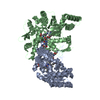
 Components
Components

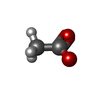



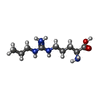






 X-RAY DIFFRACTION / Number of used crystals: 1
X-RAY DIFFRACTION / Number of used crystals: 1  Sample preparation
Sample preparation SYNCHROTRON / Site:
SYNCHROTRON / Site:  SSRL
SSRL  / Beamline: BL7-1 / Wavelength: 1.08 Å
/ Beamline: BL7-1 / Wavelength: 1.08 Å Processing
Processing FOURIER SYNTHESIS / Resolution: 2→30.91 Å / Rfactor Rfree error: 0.005 / Isotropic thermal model: RESTRAINED / Cross valid method: THROUGHOUT / σ(F): 0 / Stereochemistry target values: Engh & Huber
FOURIER SYNTHESIS / Resolution: 2→30.91 Å / Rfactor Rfree error: 0.005 / Isotropic thermal model: RESTRAINED / Cross valid method: THROUGHOUT / σ(F): 0 / Stereochemistry target values: Engh & Huber Movie
Movie Controller
Controller



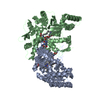
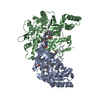
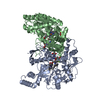
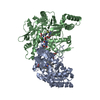
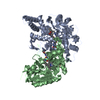
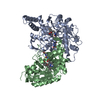
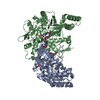
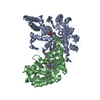
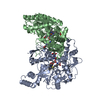
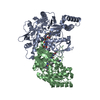
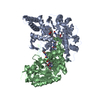
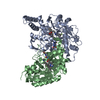
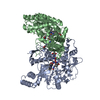
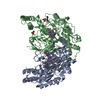
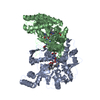
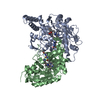
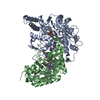

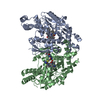
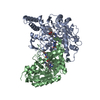

 PDBj
PDBj
